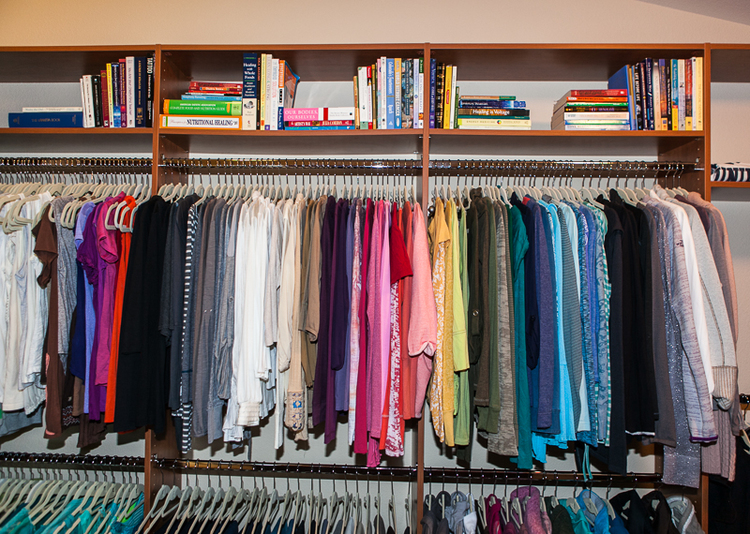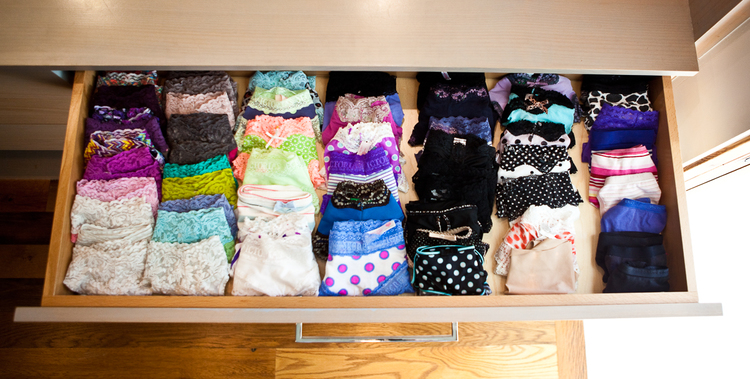Seasonal Closet Shuffle: Out with the Sweaters and Scarves, in with the Light and Bright
/Daffodils. Crocuses. Poolside margaritas.
Okay, margs by the pool in mid-April are a stretch in most areas of the U.S. (yes, we woke to snow in Boulder this week), but weather with a hint of summer is definitely arriving and, with it, the potential to maximize your closet space. Rotating out woolly sweaters and bulky jackets that suck up precious closet real estate and re-stocking your space with breezy shirts, tees, tank tops, and flip-flops is one of early spring’s most gratifying rituals. I can taste the salt on the rim just thinking about it.
All clothing projects start with--gold star if you know the answer!--that ruthless purge I like to encourage at any opportunity. Go through clothes with a critical eye, discarding what no longer works or fits. Get rid of stuff you haven’t worn and fling out anything you’ve tried on several times but always end up taking off at the last second. Why is it that certain clothes are forever the ugly stepsisters who never make it to the ball? And, honestly, if they haven’t by now, will they ever actually get there?
Most of us organize into two seasons: spring/summer and fall/winter. The idea is to pack the old season away to make room for the new. If you have the space or prefer to keep all your clothing in your closet, you can still separate out by season and file the current season front and center and the other in the back.
Here’s how you do it.
First, make time. Pulling everything out of your closet, cleaning it, and then re-organizing it takes a few hours. I like to make sure I have a clear pathway to my closet from the folding and sorting area, otherwise known as my bed, so do a quick rearrange if need be to ensure that.
Before you begin you should know where and how you’re going to store clothing. Is it going to the basement on racks? Into storage containers on high shelves or under the bed? What do you need to make sure the task is as streamlined as possible? Gather boxes, garment bags, wooden hangers, large Ziplocs, or whatever supplies you require, and keep them close at hand.
As you begin, move methodically in one direction across your closet. Sort into piles: to be laundered, to be stored, to be given away, to be consigned (might as well make a little money if you can). Remember, you’re also purging while you’re doing this, so your donation bag should be getting a workout. When you finish, all that should remain are the crossover clothes that you may need for unpredictable weather; a few sweaters, a mid-weight jacket, a couple of long-sleeved tees, etc.
Do your drawers the same way--move in one direction across them, pulling out the old and useless, storing the clean, and dropping anything in the laundry basket that needs to be washed but will ultimately be stored. Keep like items together so that in six months when you’re doing the reverse, items will already be organized and easy to reinstate.
Making sure that everything you’re storing has been laundered or dry cleaned is critical--you want to avoid stains becoming permanent. If you’re using boxes, consider tossing in a dryer sheet or two for freshness. Depending on the climate where you live, you may need lavender or cedar balls to deter critters. You want to make sure you don’t hang sweaters or knitwear that can become misshapen over time; instead, arrange them in storage containers with the heaviest on the bottom and the lightest on the top. You can also store any items you buy on sale at the end of the season that you’ll discover as “new” when you’re reversing the process in six months.
As much as it’s tempting to just hang and rearrange the incoming clothes, take a few extra minutes to clean your closet, drawers, and shelves while empty. Bust out the hose attachment on your vacuum, and get those corners sparkling. Then, and only then, bring in your spring clothes to colorize and categorize.
Make sure you store things out of sunlight or away from any extreme temperature fluctuations: think clean, cool, dark, and dry. A guest-room closet is a good solution for off-season clothes that need hanging space as long as you don’t have to rearrange the closet to accommodate the guest. Zippered portable closets can be stored in the basement, or rolling racks with garment (or even garbage) bags work well.
A side benefit of a critical examination of your wardrobe like this is that fewer things to try on equals less time getting dressed. But the really satisfying part of a spring closet shuffle is to see your wardrobe ready for barbecues, picnics, and those poolside margaritas. Can someone pass the guacamole, please?
Happy Organizing!










